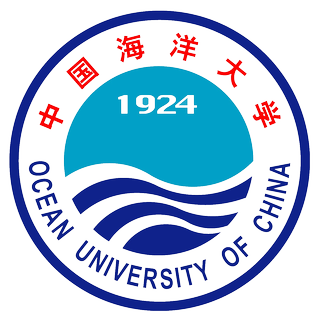Tropical Pacific Decadal Variability Working Group (TPDV WG)
Motivation
Tropical Pacific Decadal Variability (TPDV, defined here as the naturally-occurring variations at timescales from 8 to 40 years) plays an important role in the global climate as evident from its influence on the recent slowdown of the global surface temperature trend. These internal decadal variations also confound the detection of the climate change signal in the tropical Pacific, and modulate the tropical Pacific background conditions, which affect the amplitude, frequency and spatial pattern of ENSO events on interannual timescales. Understanding the nature and predictability of TPDV, its representation in climate models, and its projected changes is therefore of great value. While a significant fraction of TPDV may result as ENSO residual, we know that there are other processes that can give rise to decadal variations in the tropical Pacific. An example of such processes involves the upper-ocean meridional overturning circulation in both Hemispheres, known as Subtropical-Tropical Cells (STCs) as well as oceanic Rossby waves, which mediate the STC adjustment and the evolution and structure of tropical Pacific heat content. While the connection between STC strength and equatorial SSTs has been shown in observational and modelling studies, several questions remain open:
- Variability in the interior pycnocline transport (i.e., away from the western boundary) appears to be anti-correlated with the transport in the Low Latitude Western Boundary Currents (LLWBC); the relative influence of these two components of the transport on the equatorial upper-ocean heat content is not clear. In particular, it is not clear which fraction of the boundary transports enters the equatorial thermocline relative to the fraction that exits the Pacific through the Indonesian Throughflow (ITF), and the extent to which this partition is controlled by the Indian Ocean conditions;
- The location of the winds that are most effective in forcing the STCs and their origin. In particular, do these wind variations arise as a response to equatorial SST anomalies, or are they purely stochastic? Are they controlled by extra-tropical influences in the Pacific sector, or are they related to influences from the Atlantic and Indian Oceans through atmospheric teleconnections? The answers to these questions are key for understanding the predictability of STC variability and TPDV.
- While the STCs have been related to TPDV via circulation changes, the role of advection of temperature (or spiciness) anomalies by the mean circulation may also play a role. The feasibility for spiciness anomalies to reach the equator has been demonstrated in some modelling studies, but the influence of these subsurface anomalies on equatorial SSTs needs to be understood.
- Available instrumental records are relatively short to robustly characterize TPDV and constrain its representation in models. Paleo-climate information could help extend the observational record further back in time, but the suitability of proxy data for characterizing STC variability and its drivers needs to be assessed.
- STC variability and TPDV can be expected to change in a warming world, but the nature of these changes has not yet been investigated.
Terms of reference
This working group intends to:
- Review the existing literature on the characteristics of the STCs, and their linkages with equatorial SST anomalies in both observations and modelling studies. Identify the elements that are robust and consistent among modelling studies vs. those that are less certain and in need of further exploration. In particular, assess how modeldependent results are.
- Review the current state of understanding of the interactions between Low Latitude Western Boundary Currents (LLWBC) and tropical Pacific heat content and upwelling in observations, reanalysis products, and General Circulation Models (oceanic and coupled).
- Review current understanding of how the state of the Indian Ocean can influence the tropical Pacific Ocean heat discharge through its control on the ITF at decadal timescales (in analogy to what proposed for ENSO) and whether it can affect the contribution of the LLWBC to the tropical Pacific equatorial thermocline heat content. This may include liaising with the Indian Ocean Regional Panel.
- Review current state of knowledge on the influence of the Indian and Atlantic regions on the Pacific basin via atmospheric teleconnections - including liaising with the Pantropical Interactions Focus group to assess the role played by inter-basin interactions on TPDV.
- Review studies that assess the fidelity of state-of-the-art climate models in reproducing the key processes described above and identify aspects in need of further examination.
- Explore how paleo-climate data and paleo simulations can deepen our understanding of TPDV by extending the instrumental record.
- Examine which changes may occur to TPDV under different warming scenarios, what causes them, and how robustly they are represented in models.
- Summarize the findings of the working group in one or more papers, including one review paper, and possibly other papers presenting new research resulting from collaborations among WG members, e.g., the examination of the STCs in ocean model simulations forced with the same atmospheric forcing protocol, like the OMIP simulations recently completed as part of the CMIP6 project, to assess the role of the forcing vs. models' specific structure in the representation of the STCs
- Organize one or more conference sessions to stimulate discussions on TPDV and promote further research on the remaining open questions.
Work in this WG will be primarily conducted virtually through email exchanges and monthly conference calls. In-person meetings during conferences will also be organized whenever in-person conferences will resume and WG members can participate either in person or virtually.
Working Group Members
| Name | Affiliation | Country |
| Antonietta Capotondi (Coordinator) | University of Colorado | USA |
| Kim Cobb | School of Earth and Atmospheric Sciences, Georgia Institute of Technology | USA |
| Sophie Cravatte | LEGOS | France |
| Riccardo Farneti | The Abdus Salam International Centre for Theoretical Physics (ICTP) | Italy |
| Giorgio Graffino | University of Reading/National Centre for Atmospheric Science | UK |
| Neil Holbrook | University of Tasmania | Australia |
| Ryan Holmes | Ryan Holmes | Australia |
| Shijian Hu | Institute of Oceanology, Chinese Academy of Sciences | China |
| Yukiko Imada | Meteorological Research Institute, Japan Meteorological Agency | Japan |
| Kris Karnauskas | University of Colorado Boulder | USA |
| Yu Kosaka | Research Center for Advanced Science and Technology, The University of Tokyo | Japan |
| Fred Kucharski | Abdus Salam International Centre for Theoretical Physics (ICTP) | Italy |
| Jing-Jia Luo | Nanjing University of Science Information and Technology | China |
| Nicola Maher | University of Colorado Boulder | USA |
| Michael Mayer | University of Vienna | Austria |
| Shayne McGregor | Monash University | Australia |
| Mike McPhaden | NOAA Pacific Marine Environmental Laboratory (PMEL) | USA |
| Bo Qiu | University of Hawaii at Manoa | USA |
| Sara Sanchez | University of Colorado Boulder | USA |
| Agus Santoso | UNSW Sydney | Australia |
| Janet Sprintall | Scripps Institution of Oceanography | USA |
| Samantha Stevenson | UCSB Bren School of Environmental Science and Management | USA |
| Malte Stuecker | University of Hawaii | USA |
| Arnold Sullivan | CSIRO | Australia |
| Andrea Taschetto | University of New South Wales | Australia |
| Caroline Ummenhofer | Woods Hole Oceanographic Institution (WHOI) | USA |
| Fan Wang | Institute of Oceanology, Chinese Academy of Sciences | China |
| Mathias Zeller | Mathias Zeller | Germany |
| Xuebin Zhang | CSIRO | Australia |
Working Group Activities
1st TPDV WG Telecon (18 May 2021):
- Observations of decadal variability in the Pacific Subtropical Cells (Mike McPhaden)
2nd TPDV WG Telecon (28 June 2021):
- Wind stress forcing and low-frequency variability of the Pacific Subtropical Cells (Giorgio Graffino)
3rd TPDV WG Telecon (28 July 2021):
- Pacific Ocean Lower Latitude Western Boundary Currents (Janet Sprintall, Sophie Cravatte, SHijian Hu)
4th TPDV WG Telecon (30 August 2021):
- South Pacific variability and its connection with Tropical Pacific Decadal Variability (TPDV) [a brief review] (Neil Holbrook);
- Decadal sea level variability in the Pacific (Xuebin Zhang)
5th TPDV WG Telecon (27 September 2021):
- Indian Ocean impact on tropical Pacific through the ITF (Michael Mayer and Magdalena Balmaseda);
- Impacts of multi-decadal Pacific variability on the Indian Ocean (Caroline C. Ummenhofer)
6th TPDV WG Telecon (21 October 2021):
- Contribution of Spiciness Anomalies to Tropical Pacific Decadal Variability (Mathias Zeller, Shayne McGregor, Antonietta Capotondi, Erik van Sebille, Paul Spence);
- Importance of South Pacific VT′ in TPDV and its impact on ENSO prediction - Case study: the termination of El Nino in 2014 (Yukiko Imada)
7th TPDV WG Telecon (23 November 2021):
- Multi-Scaled Circulation Variability & Impact in the Western Tropical Pacific Ocean (WTPO) (Bo Qiu, Patrick Colin & Shuiming Chen),
- Equatorial/Off-equatorial climate connectivity via coupled Hadley-STC-cloud feedback (Malte F. Stuecker)
8th TPDV WG Telecon (14 December 2021):
- Atmospheric influences of Atlantic and Indian Oceans on TPDV: A biased point of view (Fred Kucharski);
- Pacific low-frequency variability: tropical-extratropical interactions and subtropical cells (Riccardo Farneti et al.)
9th TPDV WG Telecon (2 February 2022):
- Paleo Tropical Pacific Decadal Variability: What can paleoclimate offer? (Sara Sanchez)
10th TPDV WG Telecon (5 May 2022):
- Tropical Pacific Decadal Variability: Oceanic Processes and Inter-basin Interactions (Antonietta Capotondi)
11th TPDV WG Telecon (15 June 2022):
- Discussion on the structure of TPDV review paper.
12th TPDV WG Telecon (22 September 2022):
- Presentation: Role of nonlinear dynamical heating in TPDV phase transitions (Malte Stuecker)
- Discussion: how to proceed with the review paper?
13th TPDV WG Telecon (7 November 2022)
- Atlantic and Indian Ocean influences on TPDV (Shayne McGregor)
- Wind forcing of the STCs (Antonietta Capotondi & Bo Qiu)
- Brief update on the TPDV review paper.
TPDV WG In-person Meeting (14-17 February 2023, Monash University, Melbourne, Australia)
- Feb.14: Open Plenary Sessions 1-4.
- Feb.15: Revisit the different sections of the TPDV review paper to see how they all fit together prior to discussing the key points of the paper and the major messages to be included in the Conclusions section (each section to provide 1-slide summary).
- Feb.16-17: Finalize the missing sections and make progress on the remaining figures in the TPDV review paper.
Publications:
Decadal climate variability in the tropical Pacific: Characteristics, causes, predictability, and prospects
Power, S., Lengaigne, M., Capotondi, A., Khodri, M., Vialard, J., Jebri, B., Guilyardi, E., McGregor, S., Kug, J. S., Newman, M., McPhaden, M. J., Meehl, G., Smith, D., Cole, J., Emile-Geay, J., Vimont, D., Wittenberg, A. T., Collins, M., Kim, G. I., Cai, W. & 15 others, Okumura, Y., Chung, C., Cobb, K. M., Delage, F., Planton, Y. Y., Levine, A., Zhu, F., Sprintall, J., Di Lorenzo, E., Zhang, X., Luo, J. J., Lin, X., Balmaseda, M., Wang, G. & Henley, B. J., 1 Oct 2021, In: Science. 374, 6563, 10 p., eaay9165.
Capotondi, A., S. McGregor, M. McPhaden, S. Cravatte, N. Holbrook, Y. Imada, S. Sanchez, J. Sprintall, M. Stuecker, C. Ummenhofer, M. Zeller, R. Farneti, G. Graffino, S. Hu, K. Karnauskas, Y. Kosaka, F. Kucharski, M. Mayer, B. Qiu, A. Santoso, A. Taschetto, F. Wang, X. Zhang, R. Holmes, J.-J. Luo, N. Maher, C. Martinez-Villalobos, R. Naha, S. Stevenson, A. Sullivan, P. van Rensch, T. Xu, G. Meehl, N. Schneider, 2023: Mechanisms of Tropical Pacific Decadal Variability. Nature Reviews Earth & Environment, 4, 754–769, doi:10.1038/s43017-023-00486-x













